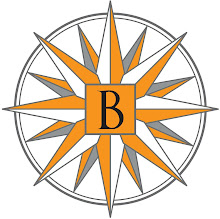 A hurricane hit the Outer Banks of North Carolina on Sept. 2 & 3, 1913.
A hurricane hit the Outer Banks of North Carolina on Sept. 2 & 3, 1913.
With the damage inflicted by Hurricane Irene fresh in our minds, below are some noteworthy excerpts from the Lighthouse Service Annual Report of 1914.
Illustration: Ocracoke Island Light by Gerald C. Hill, from Southeast Lighthouses Illustrated Map & Guide.
DURING THE FISCAL YEAR 1914
| Vessel or employee rendering service. | Nature of assistance. |
| Tillman F. Smith, keeper, Washington, N.C., lighthouse depot. | Saved buoys from going adrift from lighthouse depot in storm. |
| Daniel T. Paul, laborer in charge, Rumley Marsh Light, N.C. | Recovered lighthouse property after a storm. |
| Robert H. Bertram, master, Light Vessel No. 80. | Kept light displayed on light vessel with proper characteristics during storm. |
| Mumford Guynn, keeper, and James O. Casey, assistant keeper, Pamlico Point Light Station, N,C. | Ditto. |
| Wesley Austin, keeper, Ocracoke Light Station, N.C. | Saved the Government property in his charge and gave shelter to the residents of Ocracoke Island during storm. |
| John T. Shipp, keeper, and Thomas Quidley, assistant keeper, Neuse River Light Station, N.C. | Saved the Government property in their charge during storm. |
| Alexander T. Loss, mate, and crew of Light Vessel No. 71. [Stationed at hazardous Diamond Shoal, off Cape Hatteras, torpedoed by a German submarine in 1918.]
| Kept light vessel near her station during storm. |
| Herbert R. Brownley, first officer, tender Juniper. | Rendered assistance to 3 men on board the power boat which had become disabled near Beaufort Inlet, N.C. |
| Tender Maple, Thomas J. Miles, commanding. | Took wrecked schooner in tow and beached her on Cedar Point, Md. |
| Randolph Scarborough, master, Light Vessel No. 80 and crew. | Efficient service in handling light vessel and quickly returning her to station after she had parted moorings in hurricane. |






